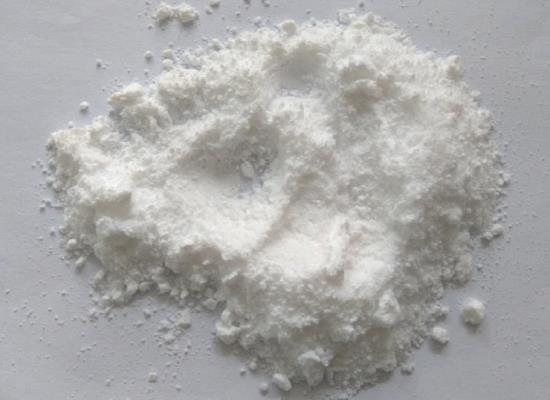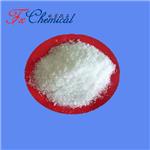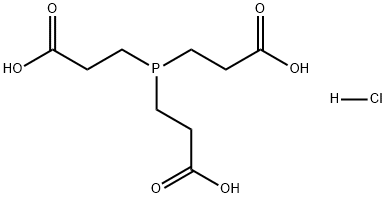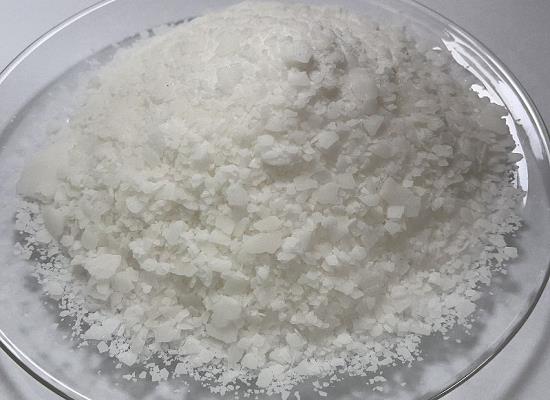Tris(2-Carboxyethyl)Phosphine Hydrochloride: Applications in Veterinary Medicine and Analytical Chemistry
General Description
Tris(2-carboxyethyl)phosphine hydrochloride serves important roles in both veterinary medicine and analytical chemistry. In veterinary medicine, this potent antioxidant enhances the in vitro maturation of porcine oocytes by reducing oxidative stress, thereby improving fertilization and embryo development rates. Research indicates that specific concentrations of this compound significantly increase key reproductive parameters, including the first polar body extrusion and monospermy rates, while decreasing apoptosis. In analytical chemistry, tris(2-carboxyethyl)phosphine hydrochloride is utilized as a reductant for accurately measuring dehydroascorbic acid in biological samples. By converting dehydroascorbic acid back to ascorbic acid, Tris(2-carboxyethyl)phosphine hydrochloride aids in assessing oxidative stress levels in various tissues, highlighting its significance in both fields for enhancing reproductive outcomes and understanding biochemical processes.

Figure 1. Tris(2-carboxyethyl)phosphine hydrochloride
Applications in Veterinary Medicine
Tris(2-carboxyethyl)phosphine hydrochloride, a potent antioxidant, has been gaining attention in veterinary medicine, especially in the field of reproductive biology. Its application is particularly significant in enhancing the in vitro maturation process of porcine oocytes, which is a critical step in the in vitro production of embryos. The introduction of tris(2-carboxyethyl)phosphine hydrochloride in culture media allows for the reduction of oxidative stress, a known factor that negatively impacts oocyte quality. By mitigating oxidative damage, this compound supports the maturation of oocytes, ultimately leading to improved fertilization and embryonic development rates. 1
Enhancing Oocyte Quality
Research has demonstrated that treatment with tris(2-carboxyethyl)phosphine hydrochloride significantly increases the first polar body extrusion rate and monospermy rate in porcine oocytes. In experimental settings, oocytes were treated with varying concentrations of tris(2-carboxyethyl)phosphine hydrochloride, with 100 μM being particularly effective. This concentration not only reduced the levels of reactive oxygen species but also enhanced glutathione levels and mitochondrial content within the oocytes. These biochemical improvements are critical for ensuring oocytes reach optimal developmental stages, which is essential for successful fertilization and subsequent embryo development. 1
Impact on Embryonic Development
The positive effects of tris(2-carboxyethyl)phosphine hydrochloride extend beyond oocyte maturation to influence the development of in vitro fertilized embryos. The treatment led to notable increases in cleavage rates, blastocyst formation rates, and total cell numbers in blastocysts compared to control groups. Furthermore, the compound was instrumental in reducing apoptosis rates among both oocytes and blastocysts, highlighting its protective role against cellular stress. Given these findings, tris(2-carboxyethyl)phosphine hydrochloride holds significant promise for enhancing reproductive outcomes in veterinary practices, particularly in breeding programs where improved embryo quality is desired. Future exploration into its use across different species and in various reproductive techniques can further solidify its importance in veterinary medicine. 1
Role in Analytical Chemistry
Tris(2-carboxyethyl)phosphine hydrochloride is increasingly recognized for its utility in analytical chemistry, particularly in the determination of dehydroascorbic acid in biological samples. The oxidized form of ascorbic acid, dehydroascorbic acid, plays a significant role in various biochemical processes, and accurately measuring its concentration is essential for understanding oxidative stress in tissues. In a notable method described for assessing dehydroascorbic acid levels, the compound is employed as a reductant in a solution of metaphosphoric acid and ethylenediaminetetraacetic acid. The treatment with 35 mM tris(2-carboxyethyl)phosphine hydrochloride effectively reduces dehydroascorbic acid back to ascorbic acid, facilitating its quantification. 2
Improved Measurement Techniques
The application of tris(2-carboxyethyl)phosphine hydrochloride not only aids in the reduction of dehydroascorbic acid but also enhances the accuracy of measurements across various biological tissues. In studies involving mouse tissues and plasma, this method enabled researchers to unveil significant variations in dehydroascorbic acid levels, with some tissues exhibiting levels as high as 19.5% of total ascorbic acid. The successful implementation of tris(2-carboxyethyl)phosphine hydrochloride in this analytical process emphasizes its importance in assessing oxidative stress and the overall antioxidant status in biological samples. This improved methodology represents a standard approach for future studies focusing on the implications of oxidative damage and the antioxidant mechanisms in various physiological environments. 2
Reference
1. Zeng Y, Shinada K, Hano K, et al. Effects of tris (2-carboxyethyl) phosphine hydrochloride treatment on porcine oocyte in vitro maturation and subsequent in vitro fertilized embryo developmental capacity. Theriogenology. 2021; 162: 32-41.
2. Sato Y, Uchiki T, Iwama M, Kishimoto Y, Takahashi R, Ishigami A. Determination of dehydroascorbic acid in mouse tissues and plasma by using tris(2-carboxyethyl)phosphine hydrochloride as reductant in metaphosphoric acid/ethylenediaminetetraacetic acid solution. Biol Pharm Bull. 2010; 33(3): 364-369.
);Lastest Price from Tris(2-carboxyethyl)phosphine hydrochloride manufacturers

US $20.60/KG2024-09-19
- CAS:
- 51805-45-9
- Min. Order:
- 1KG
- Purity:
- 99%
- Supply Ability:
- 5000kg

US $0.00-0.00/kg2024-09-18
- CAS:
- 51805-45-9
- Min. Order:
- 100kg
- Purity:
- 98%min
- Supply Ability:
- 50kg


